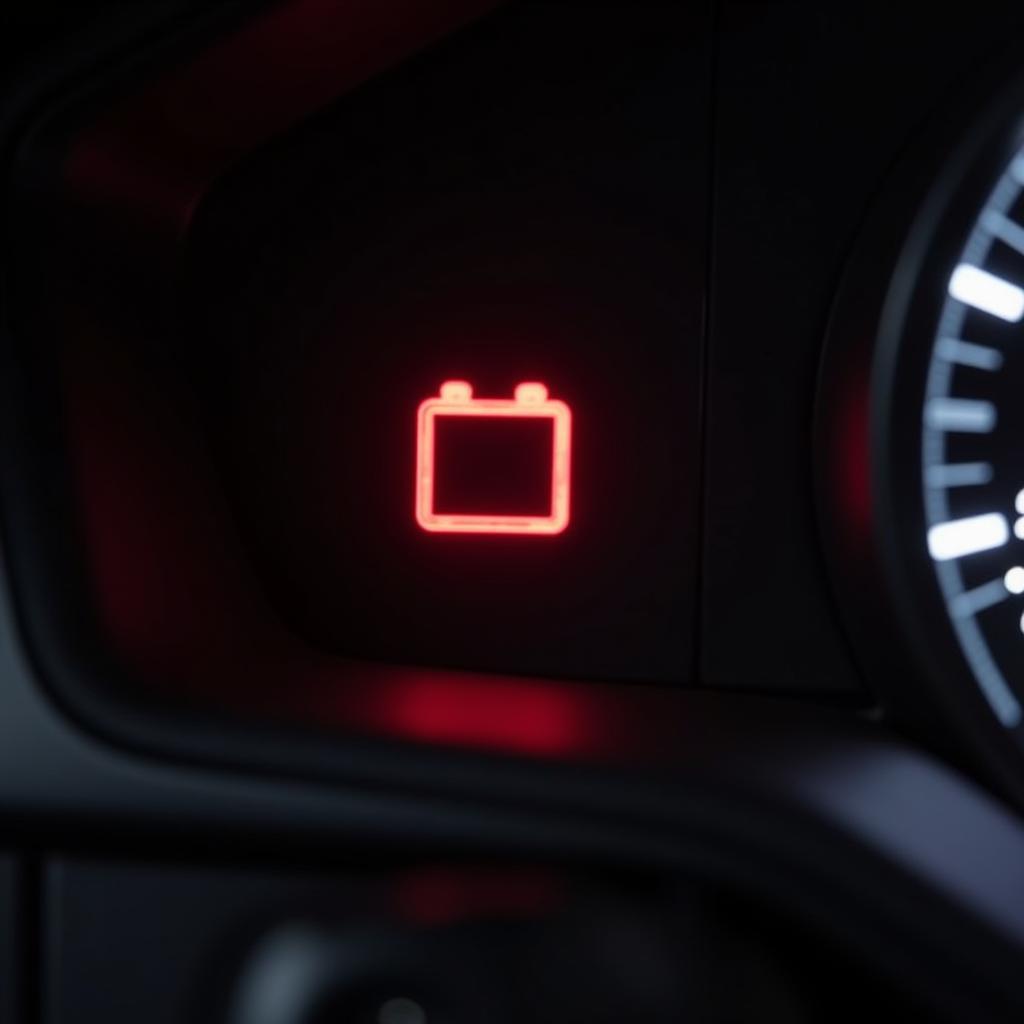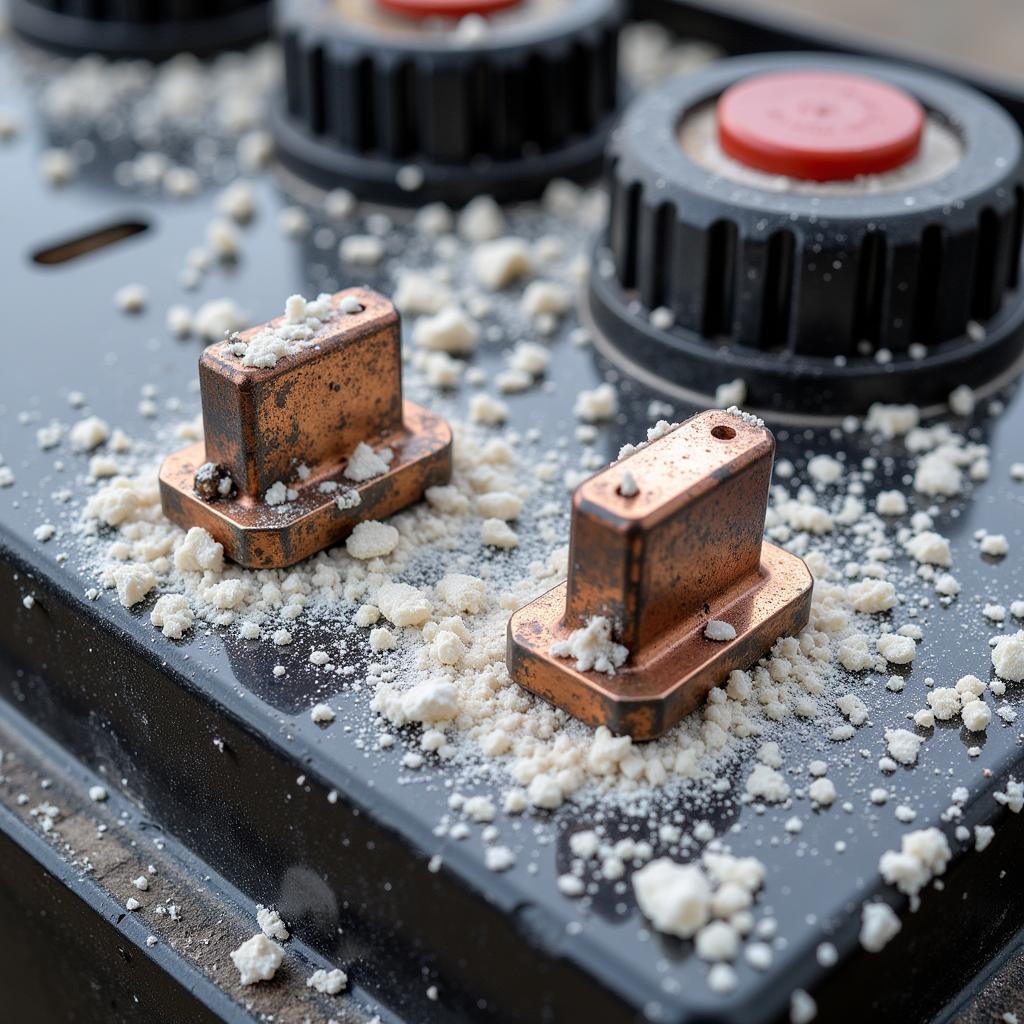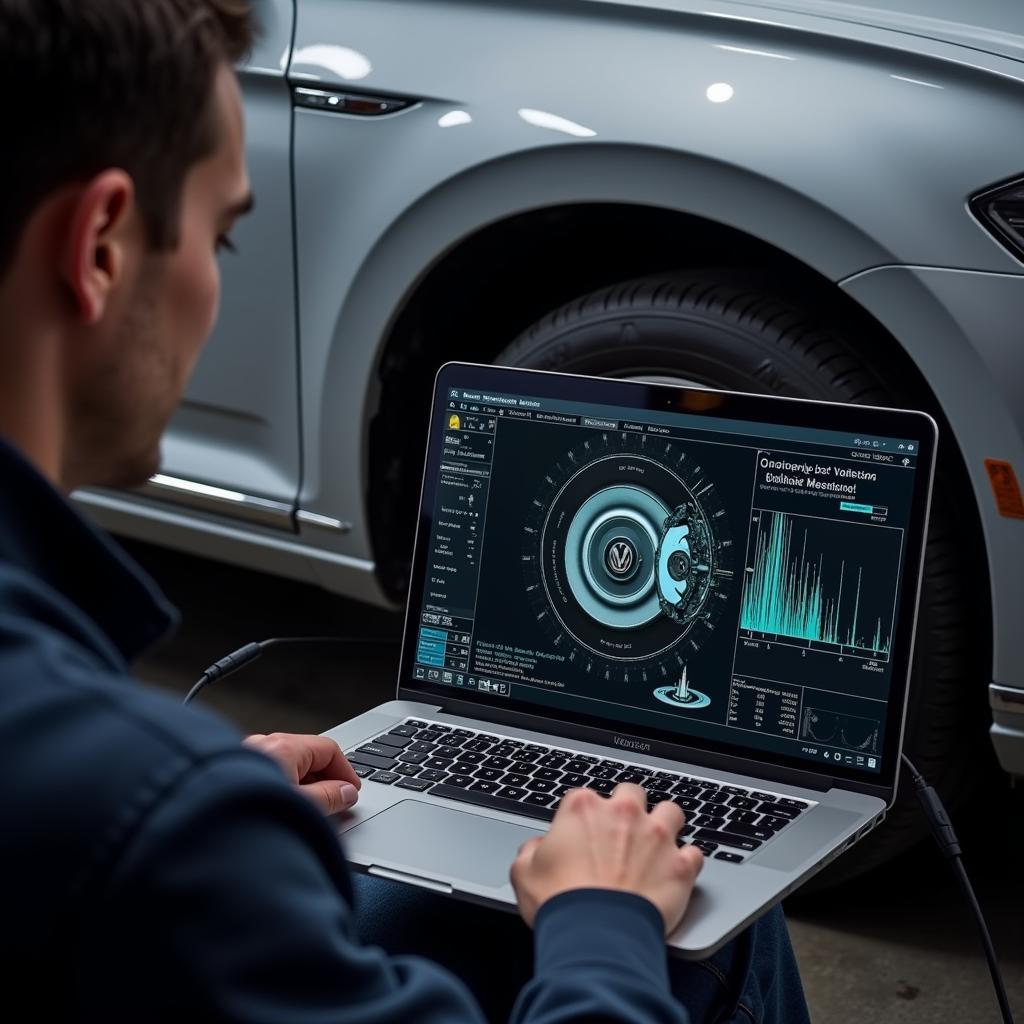Car battery sign meanings can be confusing. A dead battery can leave you stranded, but understanding those dashboard warning lights and the symbols on your battery itself can help you avoid this unpleasant situation. This article will delve into the various car battery symbols and their meanings, empowering you to diagnose potential problems and take appropriate action.
Decoding Your Dashboard: Battery Warning Light
The most common car battery sign is the battery light on your dashboard. This usually looks like a battery icon with positive (+) and negative (-) terminals. When this light illuminates while your engine is running, it signals a problem with the charging system. This could indicate a failing alternator, loose battery cables, or a corroded battery terminal. Ignoring this warning light can lead to a complete battery discharge and leave you stranded.
What to Do When the Battery Light Comes On
If you see the battery light illuminated, it’s crucial to address the issue promptly. First, check the battery terminals for corrosion. If you see a white, powdery substance, clean it off with a wire brush and a mixture of baking soda and water. Next, check the battery cables to ensure they are securely connected. If these simple checks don’t resolve the issue, it’s likely a problem with the alternator and you should take your car to a qualified mechanic for diagnosis and repair.
 Dashboard Battery Light Illumination
Dashboard Battery Light Illumination
Understanding Battery Symbols: Beyond the Dashboard
Besides the dashboard warning light, there are several symbols on the car battery itself that provide important information about its condition and performance. Understanding these symbols can help you choose the right battery for your vehicle and maintain it properly.
Cold Cranking Amps (CCA)
The CCA rating indicates the battery’s ability to start an engine in cold temperatures. A higher CCA rating means the battery can deliver more current at 0°F (-17.8°C). This is particularly important in colder climates.
Reserve Capacity (RC)
The RC rating measures the number of minutes a fully charged battery can supply power with the engine off before the voltage drops below a usable level. This is important for powering accessories like lights and the radio if the alternator fails.
Ampere-Hour (Ah)
The Ah rating reflects the battery’s capacity to deliver a specific amount of current over a period of time. A higher Ah rating typically means a longer lifespan, especially in demanding applications.
Common Car Battery Problems and Their Signs
Several problems can affect your car battery, each with its own set of signs. Recognizing these signs can help you diagnose the issue and take appropriate action.
Slow Cranking
If your engine cranks slowly when you turn the key, it could indicate a low battery charge, corroded terminals, or a failing starter motor.
Dim Headlights
Dim headlights, especially when the engine is idling, can be a sign of a weak alternator or a low battery charge. Similar to how an alternator charge battery while idling, a failing alternator may not adequately charge the battery.
Clicking Sound When Starting
A rapid clicking sound when you try to start the engine usually means the battery doesn’t have enough power to engage the starter motor. This can be due to a dead battery, loose connections, or a faulty starter.
 Corroded Car Battery Terminals
Corroded Car Battery Terminals
Maintaining Your Car Battery
Proper maintenance can extend the life of your car battery and prevent unexpected failures. Regularly cleaning the battery terminals, checking the battery cables, and having the charging system tested can help identify potential issues before they become major problems. Just like knowing if a new car battery will go dead from sitting is important, regular maintenance is also key.
Conclusion
Understanding car battery sign meanings is essential for maintaining your vehicle and avoiding breakdowns. By recognizing the dashboard warning lights and the symbols on the battery itself, you can take proactive steps to address potential problems and ensure reliable starting power. Don’t ignore these signs – they could be telling you something important.
FAQ
- What does the car battery light on the dashboard mean? It typically indicates a problem with the charging system, such as a failing alternator.
- What is CCA? Cold Cranking Amps, a measure of a battery’s ability to start an engine in cold temperatures.
- What is RC? Reserve Capacity, the number of minutes a battery can power accessories with the engine off.
- What should I do if my car battery terminals are corroded? Clean them with a wire brush and a mixture of baking soda and water.
- How can I maintain my car battery? Regularly clean the terminals, check the cables, and have the charging system tested.
- Why are my headlights dim? It could be a sign of a weak alternator or a low battery charge.
- What does a clicking sound when starting the car mean? Usually, it indicates the battery doesn’t have enough power to start the engine.
Like understanding car stereo Hyundai radio wiring color codes or troubleshooting club car battery problems, knowing your car battery signs can empower you as a vehicle owner. Furthermore, understanding the specifics of a 2001 Mitsubishi car radio wiring diagram highlights the importance of electrical knowledge in car maintenance.

